Reptiles elicit a mixed response from people. Symbolic of the primeval, these creatures offer a feeling of connection to the dinosaur age. Ranging from powerful and dangerous to garishly colored and cute, reptiles offer amazing examples of animal diversity and adaptation. These 10 especially remarkable creatures deserve a closer look.
10. Spider-Man Lizard
The red-headed rock agama is one of the most spectacular reptiles on the planet. Like a male bird becoming brighter in breeding season, a male rock agama develops brilliant coloration on the face and body during the warmer parts of the day. Provocation of aggression through territorial conflict may also cause the males to quickly flush with a brighter color. The contrast between a red face and a brilliant blue body has led this animal to become something of an Internet celebrity, known as the “Spider-Man lizard.” The lizards measure around 14-15 inches in length, and feed on a wide variety of small prey gathered from their habitat. Agama lizards are the dominant lizard group in Africa.
9. Marine Iguana
Animal adaptation is one of the most powerful forces in nature. Evolutionary change may cause unique animals to emerge from more typical genetic stock. The highly adapted marine iguana from the Galapagos is a reptile that feeds on seaweed. The creatures can often be seen lurking on the rocks among the shores of the remote islands, grazing like land iguanas. The coloration of marine iguanas includes a wide range of browns, pinkish tones and greens that stand out among the rocks. The reptiles are the only sea going lizard on the planet, and represent one of the strangest cases of adaptation worldwide. Marine iguanas swim in a crocodile-like fashion, and use their razor sharp teeth to severe algae strands from the rocks. Charles Darwin was not a fan of the iguanas in the purely aesthetic sense, describing them as “hideous beasts.”
8. Gharial
Animal adaptation often involves specific feeding methods that require the development of a new approach over time. Crocodiles and alligators use brute force and a wide, crushing bite, but one species has developed a more refined approach. Measuring up to 20 feet in length, the gharial is an imposing and enormous crocodilian but poses little threat to humans. With a refined, narrow snout and multitude of teeth, this creature feeds almost entirely on fish rather than the larger prey sought by other crocodilians. The gharial is unfortunately highly endangered and now occupies only two percent of its former range across the Indian Subcontinent, where the majority of gharial habitat once was. The creepy appearance of these reptiles is accentuated by their habit of lurking with a bulging snout just above the surface of the water.
7. Rhinoceros Viper
Vipers are among the most effective and feared predators on the planet. These venomous snakes feed on small prey, but many human interactions have dangerous consequences. The rhinoceros viper is distinctive thanks to its bold, quilt-like patchwork of brilliant colors that lends it recognition as one of the most beautiful snakes. Namesake horns protruding from its head add to the exotic appeal. The coloration is an adaptive feature that helps the snake blend in. Measuring little more than three feet in length, these slow moving reptiles are exceptionally fat for a snake, creating a heavy and imposing appearance. While docile, this long fanged forest snake delivers a bite that creates a serious and possibly fatal medical emergency.
6. Rubber Boa
British Columbia, Canada is not a place you’d think of when searching for members of the boa group of snakes. However, a small constrictor known as the rubber boa has a range that includes sections of British Columbia’s interior. The brown snakes have the ability to control their temperatures, which is unusual for reptiles. The resemblance to a miniature anaconda is noticeable despite the creature’s limited size of around 18 inches. The boa may live for up to 70 years and can be found in a wide range of habitats. Nicknamed the “two headed snake,” the rubber boa has an enlarged tail that can be used as a decoy for defense. The tail may also bear scars from mice bites due to the snake’s use of its tail to hold off adults while emptying mouse nests of young.
5. Rough Backed Litter Snake
The rough backed litter snake, also known as the dragon snake, is a one of a kind snake in a distinct genus. This bizarre snake is a rare, completely nocturnal species that feeds almost entirely on frogs. The creature is black, lengthy and readily distinguishable by its bizarre, widely spaced scales that give it a studded appearance. The snake is considered to be a more primitive snake species with a unique set of scales that include spiked and plate-like sections protruding a considerable length from the snake’s body. The creature is native to Thailand, Burma and Indonesia, and is starting to attract more attention in the scientific community due to its bizarre appearance and fascinating history.
4. Mata Mata Turtle
Most turtles are rather innocuous looking creatures. However, the mata mata turtle from South America’s Amazon is definitely one of the exceptions. Growing to a fair size, the prehistoric looking creature has an extraordinary, snake like neck that allows it to reach out and devour passing prey. Waterbirds, other reptiles, invertebrates and fish may be seized in powerful jaws that contain gripping and cutting teeth. The biting force and its effect on humans is little known, but we wouldn’t recommend an encounter. Living alongside piranhas and river dolphins, the mata mata has been called the most bizarre turtle in the world.
3. African Egg-eating Snakes
Snakes are renowned for their ferocity and fast strikes. However, African egg-eating snakes take a much slower and humbler approach to feeding. Raiding bird nests for their eggs, these snakes swallow them whole with their hinged jaws. There are only two groups of egg-eating snakes, African and Indian, and they’ve evolved independently. The absence of traditional snake teeth in these soft mouthed reptiles is compensated for by the presence of knobbed extensions along their backbone. The unusual adaptation seen in these reptiles adds to their oddity as they swallow bird eggs in an awkward manner. When eggs are swallowed, these “spine teeth” crack the egg open as it nears the stomach.
2. Legless Lizards
In nature, some things aren’t what they seem. It would be perfectly understandable for you to see a legless lizard and believe it to be a snake. Measuring up to an incredible four feet, the European legless lizard has considerable biting power and hunting skills that allow them to bring down a wide range of prey. Despite the lack of legs, lizard traits such as longitudinal stripes, ear openings behind the eyes and a noticeably flattened head remain. European legless lizards feed extensively on snails, and often wipe their nose on the ground to rid themselves of slime after feeding.
1. Chinese Softshell Turtles
The very definition of a turtle seems to be a hard shelled creature. However, the Chinese softshell turtle has a leathery shell and a rather blob-like form that combines with a curious looking nose and splayed feet. The turtles may reach a length of just over a foot and will forage on a wide range of prey. They sport a particularly grotesque physical adaptation — the ability to urinate through their mouths. Chinese softshells are garnering increased attention from scientists due to their ability to orally expel urea while submerged in the water. This method prevents water loss and excessive salt buildup and helps the turtles live in their brackish water environment.
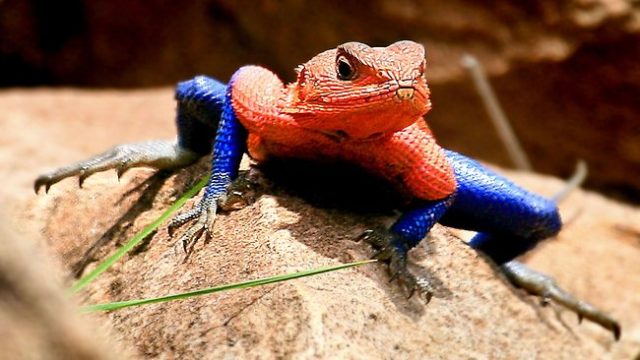

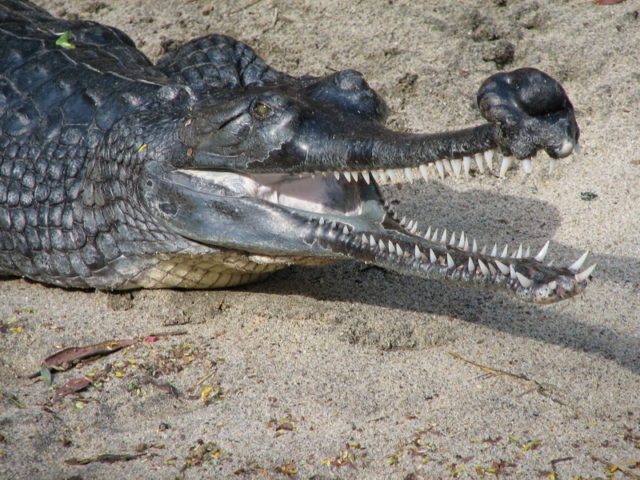
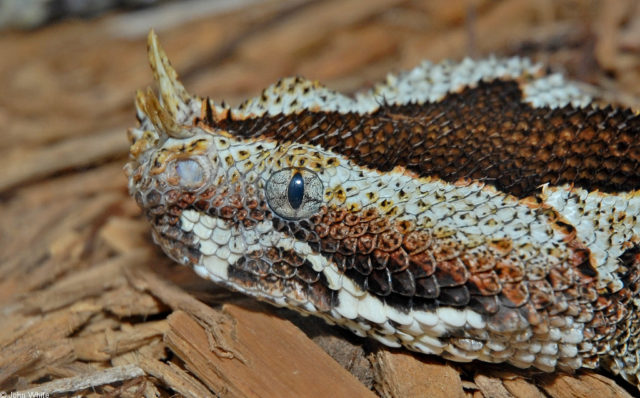
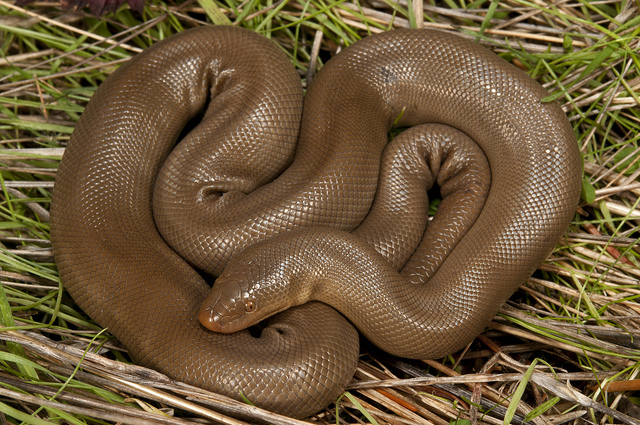
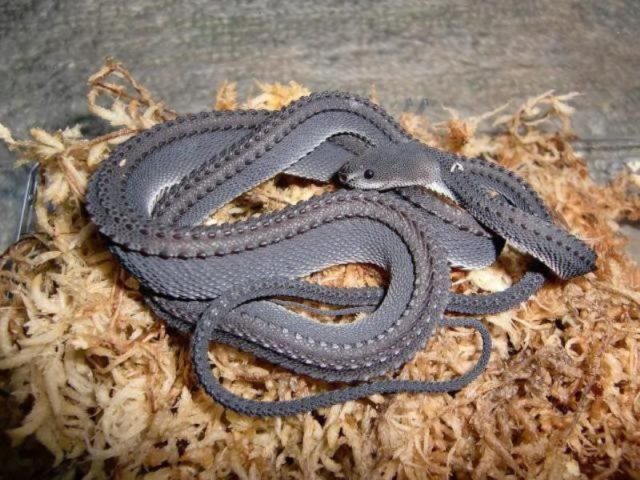
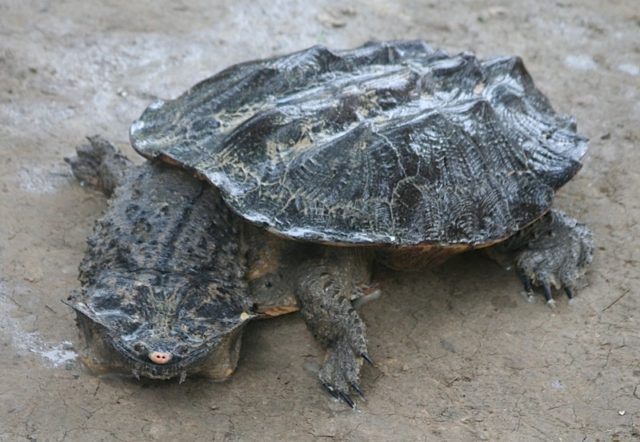
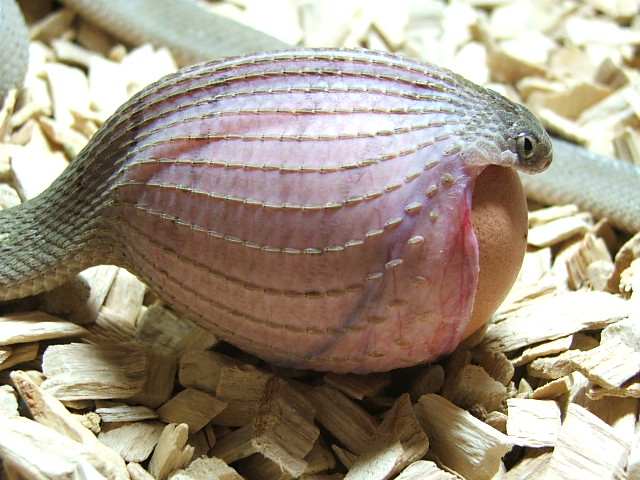

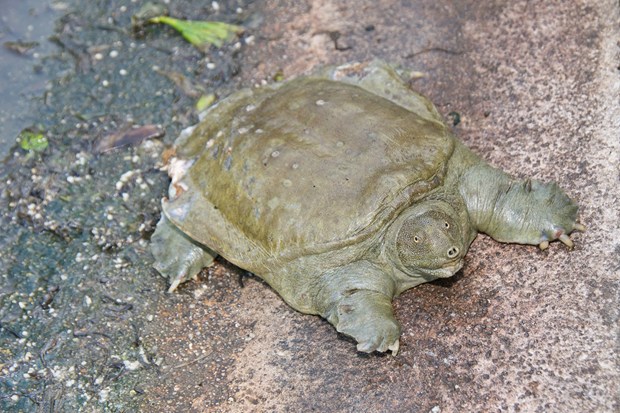
6 Comments
you guys should have a site this page or a MLA format fro Bibliographies.
u are so right kftjy im having a hard time doing science things with a bibliography.
That is creepy
The dangerous reptile live in Washington DC but the most dangerous live in Tel Aviv
They may be the weirdest reptiles, but the most dangerous reptiles live in Washington, DC.
You missed the snake-necked turtle! 🙂
See: http://www.adelaideitour.com.au/Baby%20Snake%20Neck%20Turtle.JPG